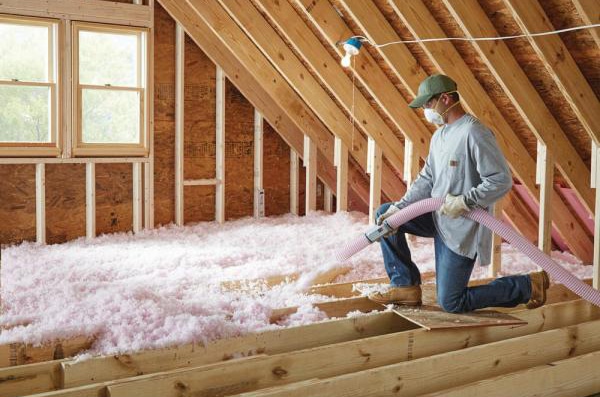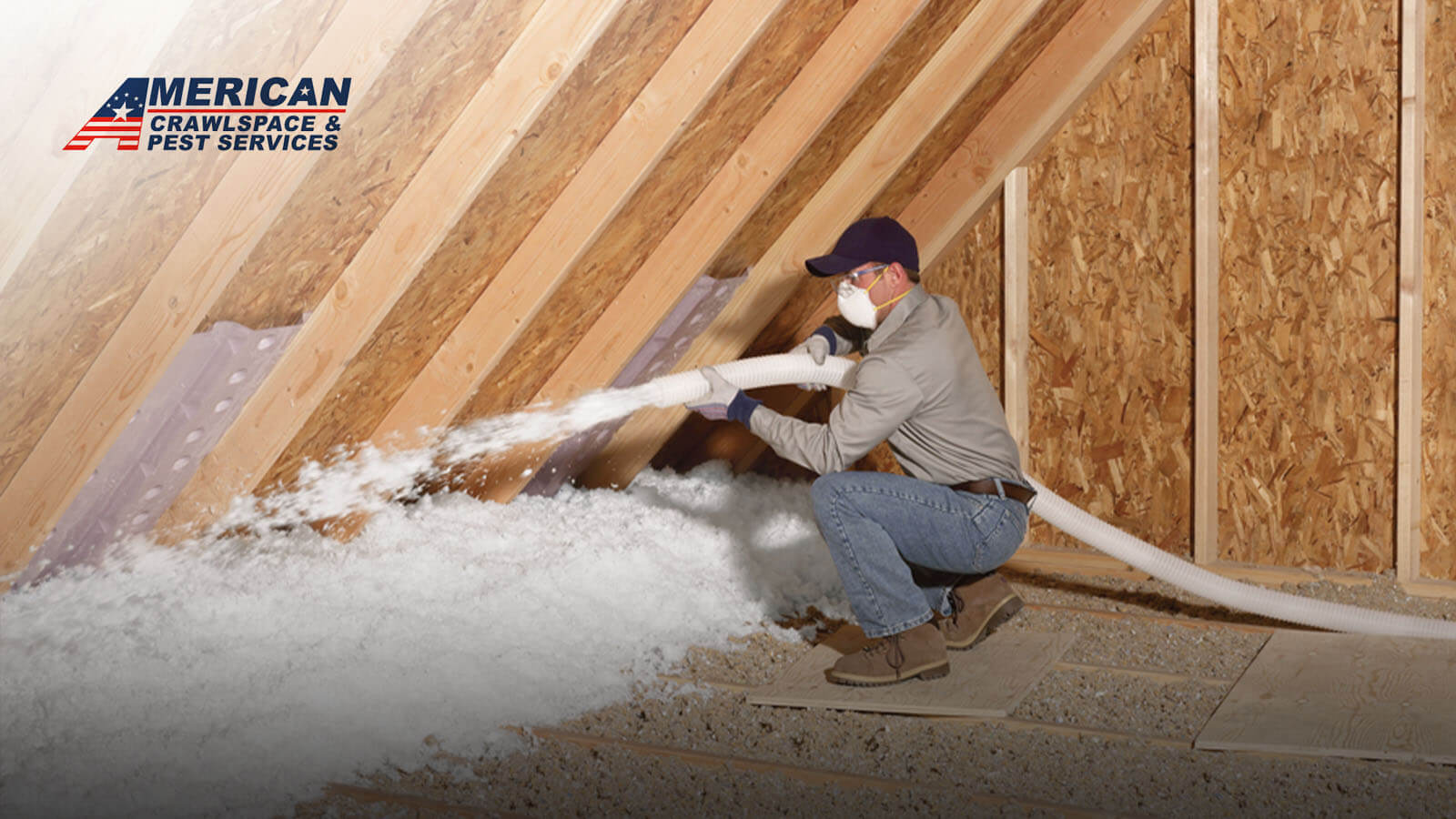Expert Tips for Enhancing Your Home with Attic Insulation DFW
Wiki Article
Discover the Various Kinds of Attic Insulation and Their One-of-a-kind Advantages for Your Home's Power Performance

Fiberglass Insulation
Fiberglass insulation is among one of the most commonly used products for attic room insulation as a result of its exceptional thermal performance and cost-effectiveness. Made up of tiny glass fibers, this material effectively traps air, creating an insulating obstacle that assists maintain regular interior temperature levels. Its high R-value per inch makes it especially efficient at standing up to warm transfer, which is important for power conservation in homes.
Installment of fiberglass insulation is reasonably simple, commonly readily available in batts or loose-fill forms, accommodating different attic room setups. Additionally, it is non-combustible and immune to dampness, minimizing the danger of mold and mildew growth. This toughness contributes to its longevity, making fiberglass a practical lasting investment for property owners.
In addition, fiberglass insulation is frequently made from recycled materials, which boosts its eco-friendliness. The material can also add to soundproofing, lessening sound transfer in between rooms. While it is important to wear safety gear throughout installment to avoid inflammation from the fibers, the overall advantages of fiberglass insulation, including energy savings and environmental factors to consider, make it a prominent selection for improving attic room performance and advertising a comfy living atmosphere.
Spray Foam Insulation
Spray foam insulation is a very efficient option for attic room insulation, known for its superior air securing and thermal efficiency. This innovative insulation material is made up of a blend of isocyanate and polyol material, which, when combined, expands swiftly to fill gaps and tooth cavities in the attic room room. Its ability to comply with various surface areas ensures a constant obstacle against air leaks, substantially reducing warmth loss throughout cooler months and warm gain during warmer seasons.Among the crucial benefits of spray foam insulation is its high R-value per inch, which indicates it provides outstanding thermal resistance in a relatively thin application. This is especially useful in attic rooms where room is frequently limited. Furthermore, spray foam can assist lessen moisture accumulation, lowering the threat of mold and mildew and mildew growth, which can be detrimental to both the framework and interior air top quality.
While the initial price of spray foam insulation may be greater than typical options, its long-lasting power savings, combined with raised convenience and improved home worth, make it a beneficial financial investment for property owners looking for enhanced power performance. Attic Insulation DFW. In general, spray foam insulation attracts attention as an effective option for enhancing attic insulation
Cellulose Insulation

Cellulose insulation is a popular selection for attic room insulation, mostly composed of recycled paper products treated with fire resistants. This eco-friendly choice is known for its excellent thermal efficiency, effectively reducing warm transfer in both summertime and cold weather. The thick composition of cellulose allows it to fill gaps and gaps in attic room areas, supplying a smooth obstacle versus air leakages.
One of the significant advantages of cellulose insulation is its capacity to withstand mold and mildew and insects, owing to the fire resistant treatments used throughout production. Additionally, it flaunts a high R-value per inch, which translates into exceptional power efficiency. Property owners can expect lower heating and cooling costs as an outcome of boosted insulation.
Installation is commonly achieved via blowing loose cellulose right into the wanted area, permitting a reliable and fast procedure. This technique additionally reduces disturbance to the existing framework. Cellulose insulation has a relatively reduced environmental effect, as its production procedure uses recycled materials, contributing to sustainable structure practices.
Rock Wool Insulation
Among the various choices for attic room insulation, rock woollen, additionally understood as mineral woollen, stands apart because of its impressive thermal and acoustic performance. Made from natural or recycled materials, rock wool is created by thawing rock and rotating it into fibers, leading to an item that uses exceptional insulation homes.One of the considerable advantages of rock woollen insulation is its high R-value, which indicates its efficiency in withstanding heat flow. This particular not only enhances energy effectiveness yet likewise adds to preserving a comfy indoor temperature year-round. Additionally, rock woollen is inherently fire-resistant, making it a safer alternative for homes as it can withstand heats without melting or launching poisonous fumes.
In addition, rock wool insulation excels in soundproofing capabilities, efficiently minimizing sound transmission in between areas and from outdoors resources. Generally, rock wool insulation provides a detailed remedy for improving power effectiveness, security, and comfort in household setups.
Radiant Obstacle Insulation
Glowing barrier insulation works as an effective solution for lessening heat transfer in attics, particularly in warmer climates. This kind of insulation works by showing radiant heat away from living areas, thus reducing the amount of warm that goes into a home throughout heat - Attic Insulation DFW. Generally composed of an extremely reflective material, such as aluminum foil, radiant barriers are installed in attics, dealing with the roof, where they can intercept inbound warm from the sunThe key benefit of glowing obstacle insulation is its capacity to reduced air conditioning prices. By showing heat instead of absorbing it, radiant obstacles Full Report can aid maintain a much more secure interior temperature level, minimizing the work on air conditioning systems. This efficiency translates right into lower energy costs and increased comfort for home owners.
In addition to power financial savings, glowing obstacles can likewise add to boosted indoor air top quality. By reducing heat build-up, they aid reduce humidity levels, which can stop mold growth and improve overall air blood circulation. When installed properly, glowing obstacle insulation can be a vital enhancement to any energy-efficient home, making it a worthy factor to consider for home owners aiming to enhance their attic insulation method.
Final Thought
In verdict, understanding the different types of attic insulation-- fiberglass, spray foam, cellulose, rock woollen, and glowing barriers-- allows homeowners to make informed decisions pertaining to energy efficiency. By selecting the appropriate insulation material, considerable reductions in energy costs can be accomplished, along with improvements in interior comfort.

In conclusion, understanding the different kinds look at these guys of attic room insulation-- fiberglass, spray foam, cellulose, rock woollen, and radiant barriers-- makes it possible for house owners to make enlightened decisions pertaining to power efficiency.
Report this wiki page